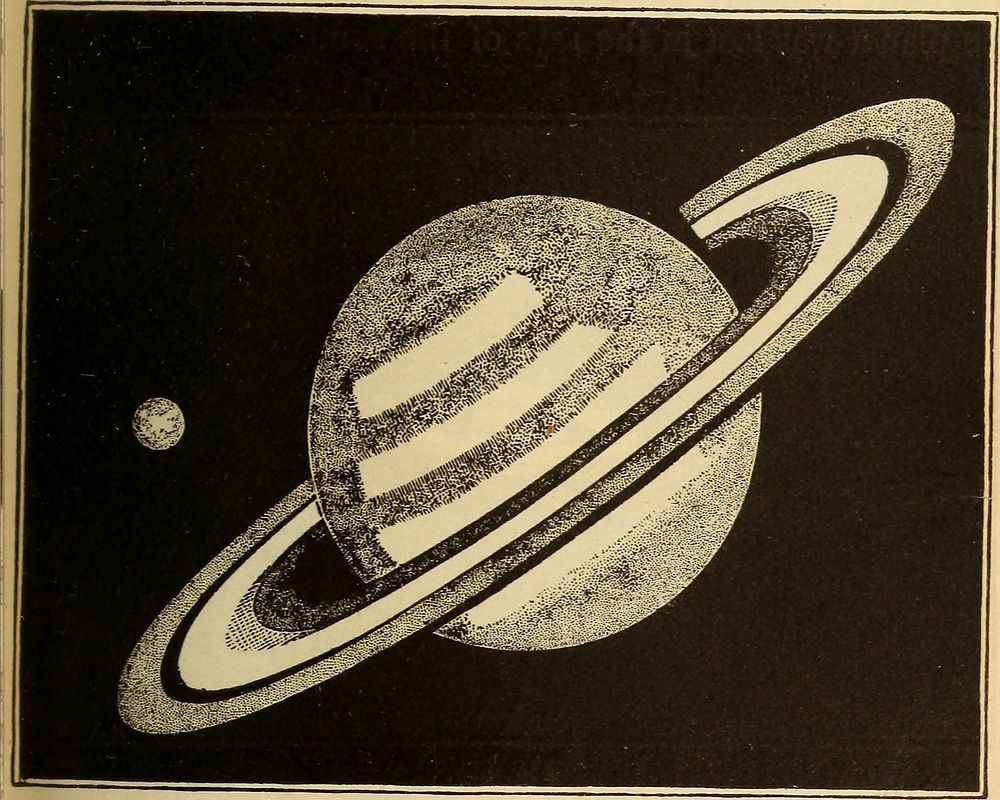https://creativecommons.org/publicdomain/zero/1.0/https://www.rawpixel.com/image/9975843

The comparative size of Earth and SaturnIdentifier: astronomyforuseo00gill (find matches)Title: Astronomy for the use of schools and academiesYear: 1882 (1880s)Authors: Gillet, J. A. (Joseph Anthony), 1837-1908 Rolfe, W. J. (William James), 1827-1910Subjects: AstronomyPublisher: New York : Potter, Ainsworth, & Co.Contributing Library: The Library of CongressDigitizing Sponsor: The Library of CongressView Book Page: Book ViewerAbout This Book: Catalog EntryView All Images: All Images From BookClick here to view book online to see this illustration in context in a browseable online version of this book.Text Appearing Before Image:with a dingy, reddish light,as if seen through a smoky atmosphere. 265. Volume and Density of Saturn. — The real diame-ter of Saturn is about seventy thousand miles, and itsvolume over seven hundred times that of the earth. Thecomparative size of the earth and Saturn is shown in Fig.286. This planet is a little more than half as dense asJupiter. 266. The Sidereal and Synodical Periods of Saturn.—Saturn makes a complete revolution round the sun in aperiod of about twenty-nine years and a half, moving inhis orbit at the rate of about six miles a second. The ASTRONOMY. 257 planet passes from opposition to opposition again in aperiod of three hundred and seventy-eight days, or thirteendays over a year. 267. Physical Constitution of Saturn. — The physicalconstitution of Saturn seems to resemble that of Jupiter;but, being twice as far away, the planet cannot be so wellstudied. The farther an object is from the sun, the less itis illuminated; and, the farther it is from the earth, theText Appearing After Image:Fig. 286. smaller it appears : hence there is a double difficulty inexamining the more distant planets. Under favorable cir-cumstances, the surface of Saturn is seen to be diversifiedwith very faint markings ; and, with high telescopic powers,two or more very faint streaks, or belts, may be discernedparallel to its equator. These belts, like those of Jupiter,change their aspect from time to time ; but they are so faintthat the changes cannot be easily followed. It is only on■are occasions that the time of rotation can be determined:rom a study of the markings. 258 ASTRONOMY, 268. Rotation of Saturn. — On the evening of Dec. 7,1876, Professor Hall, who had been observing the satellitesof Saturn with the great Washington telescope (18), saw abrilliant white spot near the equator of the planet. Itseemed as if an immense eruption of incandescent matterhad suddenly burst up from the interior. The spot gradu-ally spread itself out into a long light streak, of which thebrightest point waNote About ImagesPlease note that these images are extracted from scanned page images that may have been digitally enhanced for readability - coloration and appearance of these illustrations may not perfectly resemble the original work.
Original public domain image from Wikimedia Commons
Public DomainFree CC0 image for Personal and Business use